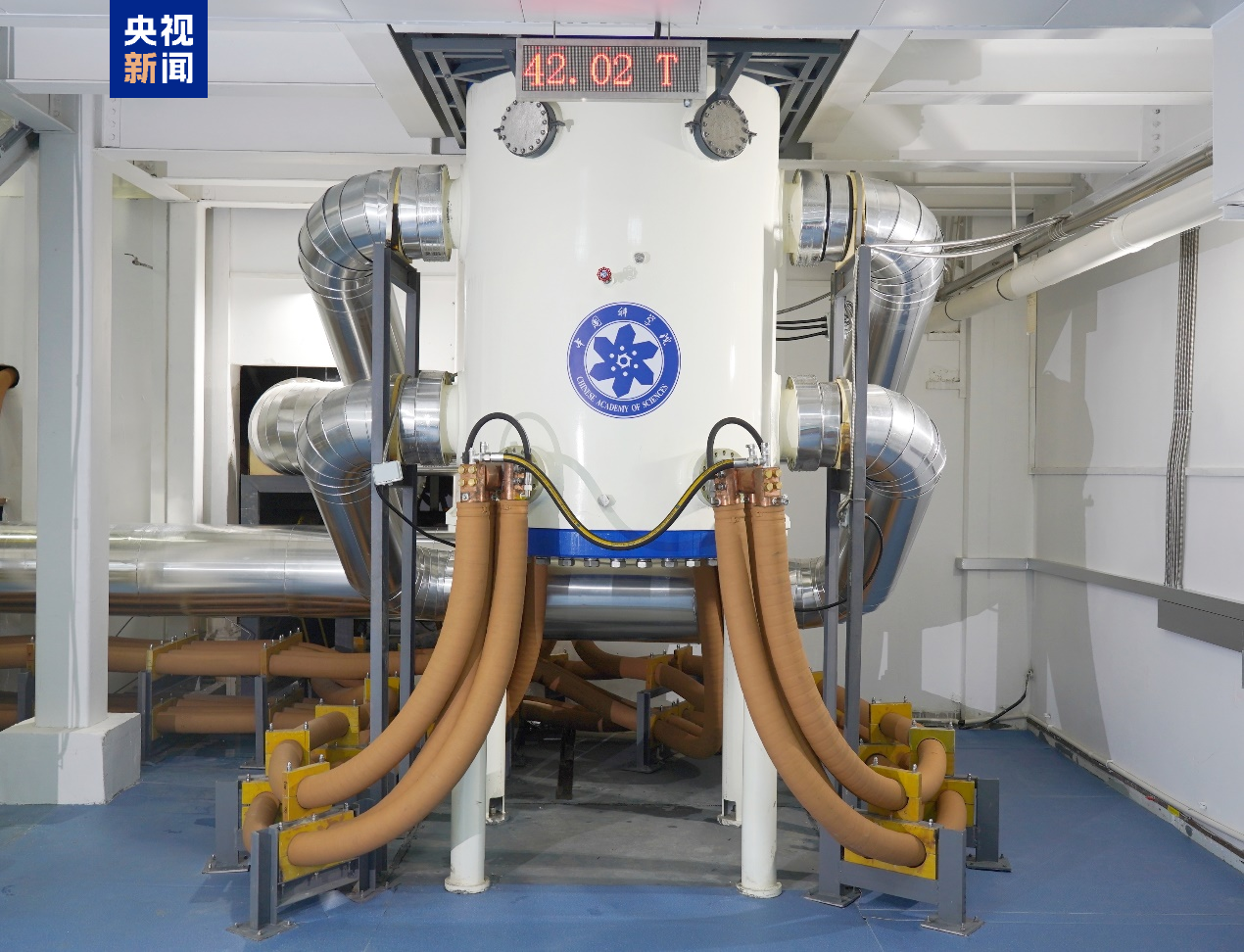
On September 22, the Hefei Institutes of Physical Science, Chinese Academy of Sciences, announced that its Strong Magnetic Field Science Center has successfully developed a water-cooled magnet that produced a steady-state magnetic field of 420,200 Gauss (or 42.02 Tesla), breaking the world record of 414,000 Gauss set in 2017 by the National High Magnetic Field Laboratory in the United States. This achievement marks a new milestone in the development of international water-cooled magnet technology for strong magnetic fields. It follows another significant technological breakthrough in steady-state strong magnetic field experimental devices, which successfully created a world record of 452,200 Gauss with a hybrid magnet in 2022.

A steady-state strong magnetic field is an extreme experimental condition essential for material science research and serves as a "tool" for driving significant scientific discoveries. For decades, scientists worldwide have achieved numerous groundbreaking results under steady-state strong magnetic field conditions, with over a dozen of these being awarded Nobel Prizes. Currently, there are five major steady-state strong magnetic field laboratories globally, located in the United States, France, the Netherlands, Japan, and the Science Island in Hefei, China. Steady-state strong magnetic field magnets fall into three categories: water-cooled magnets, superconducting magnets, and hybrid magnets that combine both types. Water-cooled magnets were the first type used by scientists, offering flexible and quick magnetic field control while providing magnetic field strengths that far exceed those of superconducting magnets, thereby offering reliable and efficient experimental conditions for material science research.

With the support of a collaborative research project between the Chinese Academy of Sciences and the Anhui provincial authorities, and after nearly four years of relentless effort, the strong magnetic field technology research team innovated the magnet structure and optimized the manufacturing process, ultimately producing a steady-state magnetic field of 420,200 Gauss under a power supply of 32.3 megawatts. This achievement represents a new pinnacle in the development of water-cooled magnet technology for strong magnetic fields, both in China and worldwide. The successful development of this magnet not only better meets the practical needs for quick control of steady-state strong magnetic fields for researchers but also provides powerful experimental conditions for scientists to explore new phenomena and uncover new principles, laying a crucial technological foundation for the construction of even higher field strength steady-state magnets in China.
Researcher Kuang Guangli, the academic director of the Strong Magnetic Field Science Center, vividly compared the development of steady-state strong magnetic field technology to a competitive table tennis match, stating, “Water-cooled magnets and superconducting magnets are like ‘singles players’; hybrid magnets are like a ‘mixed doubles team’. In 2022, we reached the championship in mixed doubles through our combined advantages, and today we have achieved a new breakthrough in this field, claiming a ‘singles championship’.”
The national major scientific and technological infrastructure project for steady-state strong magnetic field experimental facilities began construction and operations in 2010 and was fully operational by 2017. By the end of 2023, the facility had logged over 600,000 machine hours, providing experimental conditions for 197 institutions, both domestic and international. Users of the facility have conducted over 3,000 cutting-edge research projects across disciplines such as physics, chemistry, materials science, life sciences, pharmacology, and engineering technology, yielding a series of significant technological achievements.